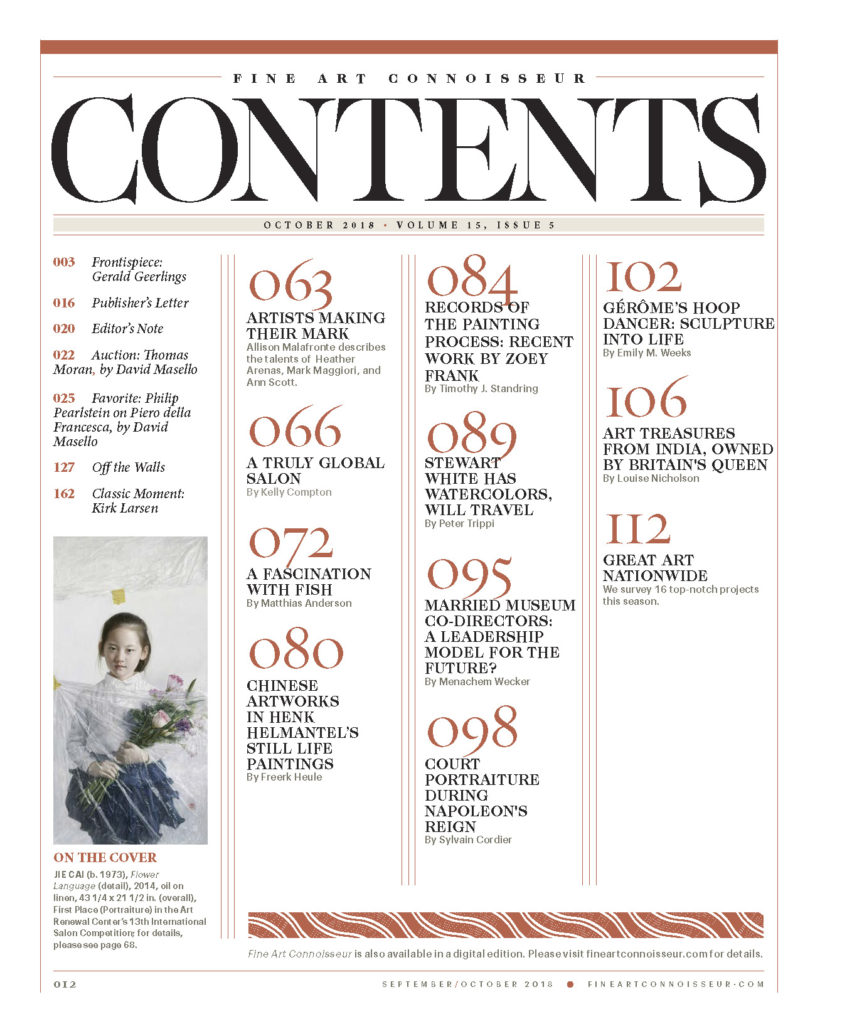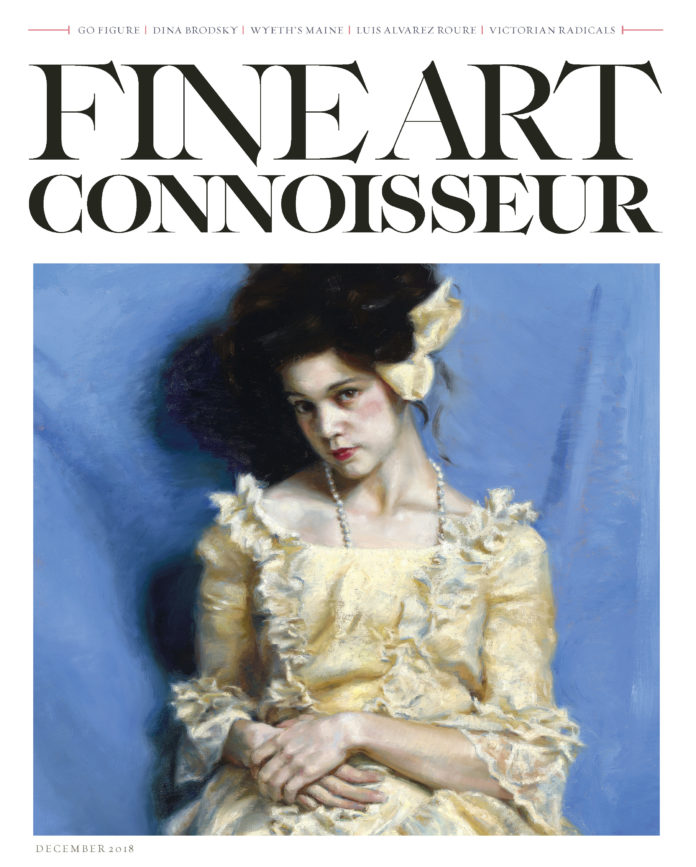Fine Art Connoisseur November/December 2018, Editor’s Note:
By Peter Trippi
This summer I stumbled upon a book that got me thinking about why some younger folks I admire do not collect original art. Its title is No Thanks Mom: The Top Ten Objects Your Kids Do NOT Want (and What to Do with Them), and it was published last year by the certified appraiser Elizabeth Stewart, Ph.D. The premise, as you may have guessed, is that Stewart has learned the hard way that millennials (those born between 1981 and 1997) minimize their household decorations to an unprecedented degree. Oh, except that the next younger generation — whatever we call them now — wants even fewer household possessions!
With humor and citations, Stewart explores the complex reasons behind this situation and explains what older folks should consider as they start downsizing and dispersing their worldly goods. First, you should be relieved to know that fine art (such as paintings and sculptures) did not make it on to Stewart’s top ten list. It includes instead things like silver plates, porcelain figurines, linens, books, antique furniture, and Persian rugs. Anyone who has been to an antiques center recently can confirm that even top examples in these categories are virtually being given away, and that situation is unlikely to improve. Of course, much of this owes to fashion: In the 1980s everyone threw out their Mad Men furniture from the 1950s and ’60s, but now young people pay a fortune for knock-offs when they cannot obtain the real (restored) thing. The pendulum will always swing back, but how long must we await it?
Stewart’s book, then, does not address the status of fine artworks, and that’s all right. Yet she got me thinking about how vulnerable paintings, sculptures, drawings, and prints are generally, and particularly when an older person is downsizing or — heaven forbid — disappears all of a sudden. There is nothing more heartbreaking than seeing original artworks festering in a Goodwill shop or flea market, priced low and decidedly unwanted. Somehow I feel more deeply about a fine artwork than I do about furniture — the former was hand-made and signed by a unique individual, and even if it’s not the greatest example, it is worrisome to spot it floating around the world on its own. (Bargain hunters surely feel differently, but not every orphaned artwork is highly collectible — it just needs a home.)
Bottom line: now more than ever, it is crucial to inventory your fine artworks, not only for your insurer’s purposes, but also for your inheritors’. Please have frank and friendly conversations with your near and dear about who wants what. If it’s a valuable artwork and you’d rather see it sold to benefit your inheritors, create a selling plan. Do not assume that your beneficiaries know as much as you do about which auctioneer or dealer is best suited to handle that sale; write it down in the inventory so they don’t have to make things up as they go. And if you are considering donating to a museum or other charity, please approach them now to hear their thoughts; they may already have a finer example, and it’s better to know the sad truth now than to leave the problem to your inheritors.
I certainly do not mean to be morose, or to discourage you from collecting more art. In fact, once you establish a working plan for your artworks’ futures, you may actually feel more focused about what you want to buy more of — or perhaps less. Being a Fine Art Connoisseur is not just about the pleasures of art enjoyed today, but also about stewarding the artworks responsibly into posterity and giving pleasure, through them, to a future connoisseur whose name you may never know. Download the November/December 2018 issue here, or subscribe to Fine Art Connoisseur today so you never miss an issue.
Download the November/December 2018 issue here, or subscribe to Fine Art Connoisseur today so you never miss an issue.
Sign up to receive Fine Art Today, the free weekly e-newsletter from
Fine Art Connoisseur magazine.









This is in response to the article, “Thinking Long Term”. I just recently learned that Europe has moral laws around collecting art. One of those laws being that if a collector wants to sell a painting, they give first right of refusal to the artist. When you are ready to sell a painting, a great (but potentially awkward) first step would be to ask the artist if they would like to purchase it back or know of any potential buyers. I’m an artist, and I sure would appreciate getting my pieces back if they were no longer wanted (by the original collector). Perhaps this would help keep original paintings out of donation stores.